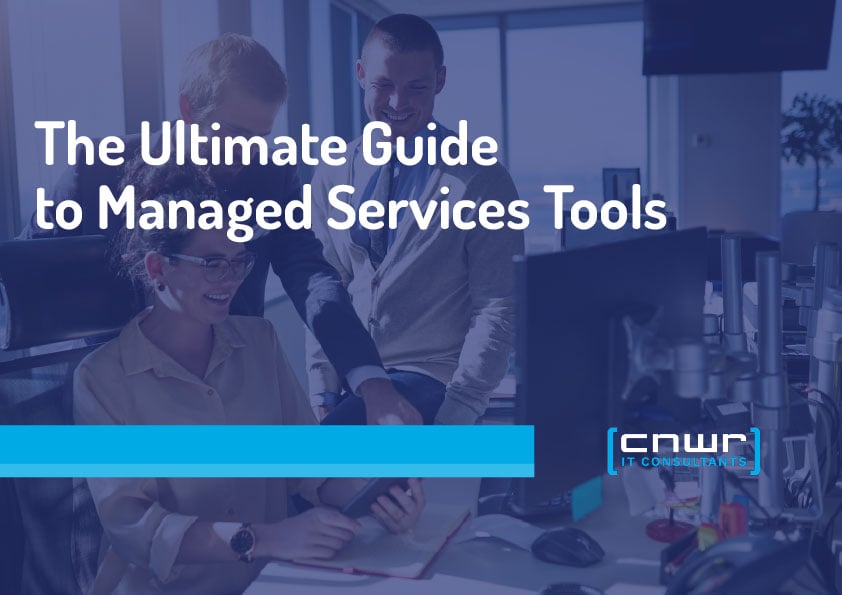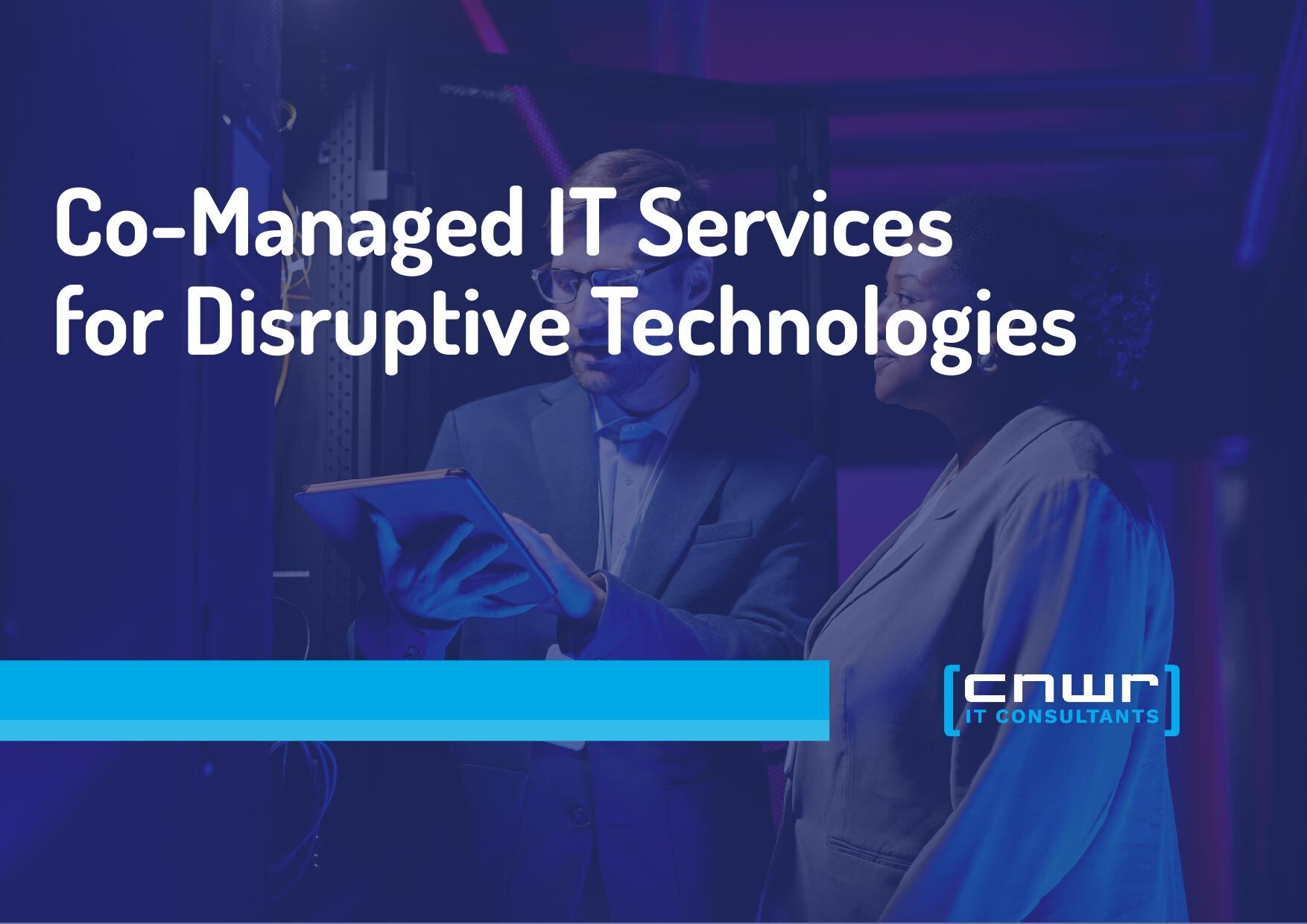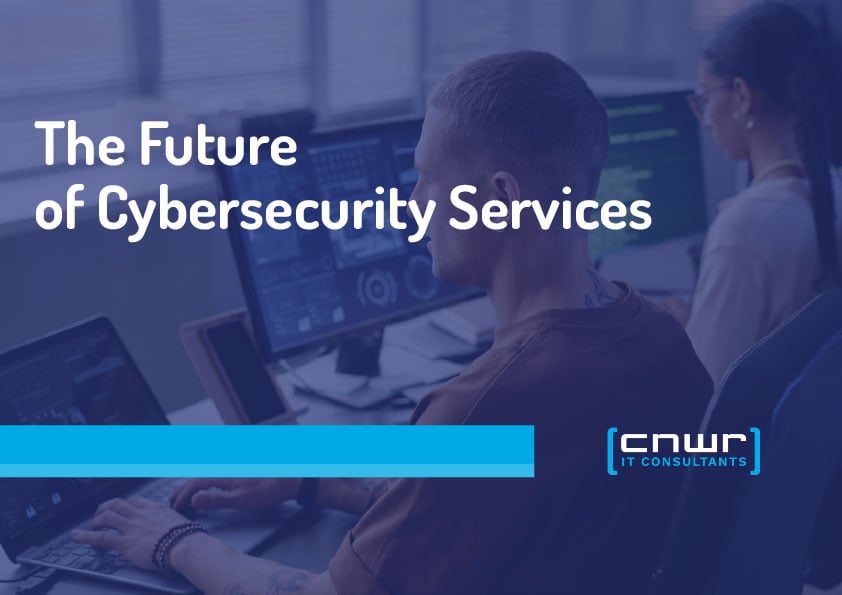Choosing a managed services provider (MSP) can feel like navigating a maze blindfolded. The stakes are high, the options are endless, and one wrong turn can lead to a dead end of inefficient IT, security vulnerabilities, and wasted resources.
For small and medium-sized businesses (SMBs), this decision isn't just about outsourcing IT; it's a strategic move that can define your growth trajectory, secure your assets, and give you a powerful competitive edge. Yet, many business leaders dive in without a map, unsure of what questions to ask or what to look for in a technology partner.
This guide is your map. We're here to demystify the process of evaluating managed services tools and providers. You'll learn what managed services are and why they are so critical in today's business landscape. We'll explore the tangible benefits of making the right choice and the potential pitfalls of getting it wrong.
Most importantly, we will provide a comprehensive, step-by-step framework for evaluating potential MSPs. From assessing your own needs to scrutinizing their technical expertise, security posture, and long-term partnership potential, this guide will equip you with the knowledge to make an informed, confident decision. By the end of this post, you won't just know how to choose an MSP…you'll know how to choose the right MSP for your business.
Table of Contents
- What Are Managed Services?
- Why Should Your Business Evaluate Managed Services Tools?
- How to Evaluate Managed Services Tools: A Comprehensive Guide
- Red Flags & What to Avoid
- Co-Managed IT: When Your Internal Team Needs Horsepower, Not Replacement
- Sample SLA Items to Ask For
- Your Next Step: Partnering for Strategic Growth
- Key Takeaways
- Frequently Asked Questions
What Are Managed Services?
At its core, a managed services provider is a third-party company that proactively manages a customer's information technology (IT) infrastructure and end-user systems. Think of an MSP as your outsourced IT department, but with a much wider and deeper bench of expertise. Instead of the traditional "break/fix" model, where you call for help only when something breaks, an MSP's goal is to monitor your environment 24/7/365 to prevent issues before they cause downtime or disrupt your business.
For many SMBs, an MSP is the perfect solution. It allows you to operate at peak efficiency and leverage enterprise-grade technology without the significant cost and resources required to build and maintain a large, on-site IT team. The services offered can be comprehensive, covering everything from network and server management to cybersecurity, cloud services, and strategic IT planning.
Essentially, an MSP partnership allows your business to augment its existing staff and infrastructure. It frees up your team to focus on core business objectives while the MSP handles the complex, ever-changing world of technology. This isn't just about keeping the lights on; it's about leveraging technology as a strategic asset to drive your business forward.
Why Should Your Business Evaluate Managed Services Tools?
Making the decision to partner with an MSP is a significant one. A thorough evaluation isn't just a box-ticking exercise; it's a critical business process that directly impacts your efficiency, security, and bottom line. So, why is it so important to get this right?
First, a well-chosen managed services tool and provider can dramatically improve your operational efficiency. By automating time-consuming workflows and taking over daily IT management, an MSP frees up your team's valuable time. Instead of fighting fires and dealing with tech glitches, your employees can focus on innovation, customer service, and revenue-generating activities. This shift from reactive problem-solving to proactive strategy is a more modern strategy for productivity.
Second, in an age of ever-present cyber threats, security is paramount. A reputable MSP brings a level of cybersecurity expertise that most SMBs simply can't afford in-house. They implement proactive security monitoring, vulnerability management, and robust disaster recovery plans to protect your data and ensure business continuity. This isn't just about avoiding costly data breaches; it's about protecting your reputation and maintaining your customers' trust.
Finally, the right MSP is a strategic partner that supports your long-term business growth. IT infrastructure is a foundational building block for your future. An MSP that understands your vision can help you scale your technology seamlessly, whether you're expanding rapidly or need to adapt to market changes. They provide the strategic guidance, often through services like a virtual CIO (vCIO), to ensure your technology roadmap aligns perfectly with your business goals. Choosing the right MSP isn't just a tech decision; it's a growth decision.
A Quick Real-World Runway (Illustrative Scenarios)
- Before: Your receptionist spends hours chasing a broken printer, your CFO suffers an hour of downtime during month-end, and patching is inconsistent.
- After: The MSP’s RMM flagged the printer issue, a scripted mitigation prevented the patch-related outage, and scheduled maintenance pushed a non-disruptive firmware update. The CFO completes the month-end on schedule.
- Before: You experience a ransomware event and only then realize you have no immutable backups.
- After: An MSP with proper backups and a tested restore plan keeps your business running while forensics isolates and removes the threat.
These aren’t marketing slogans; they’re the difference between reactive expense and predictable operating cost. In short, partnering with an MSP is a strategic decision. The right provider delivers operational efficiency, security, and scale.
How to Evaluate Managed Services Tools: A Comprehensive Guide
Now for the main event. How do you cut through the noise and find the MSP that will be a true partner to your business? This requires a structured approach. Let's break it down into seven actionable steps.
Step 1. Look Inward: Define Your Business Needs and Goals
Before you can evaluate anyone else, you must first understand yourself. The most common mistake businesses make is starting their search without a clear picture of what they actually need.
- Identify Your Current Network Components: Which RMM (remote monitoring & management), PSA (service automation), and security tooling do you use? What is your current MDR and NOC/SOC situation? Who owns incident response vs. escalation? How do you handle critical patches?
- Identify Your Pain Points: Where are your current IT workflows breaking down? Are you struggling with frequent downtime, slow systems, or a lack of internal expertise? Talk to your stakeholders and employees to gather feedback on their daily technology challenges.
- Define Your Business Goals: Where do you want your business to be in one, three, and five years? Your technology should be a vehicle for that growth. An MSP should support your vision, not just maintain the status quo.
- Assess Compliance Requirements: Do you operate in a regulated industry like healthcare or finance? Your MSP must have proven experience with your industry's specific compliance standards, like HIPAA or GDPR, to ensure your data is handled correctly and securely.
- Establish Your Budget: Work closely with your financial leaders to determine a realistic budget. Remember, this is an investment. The goal isn't to find the cheapest option, but the one that delivers the most value and the highest return on investment.
Step 2. Do Your Homework: Research Potential Providers
Once you have a clear list of your needs, you can begin the research phase. Create a shortlist of potential MSPs and start digging into who they are and what they offer.
- Examine Their Website and Resources: A provider's website is their digital storefront. Is it professional? Do they offer valuable content like blogs, case studies, and whitepapers that demonstrate their expertise?
- Look for Industry Experience: Do they have experience working with businesses of your size and in your industry? An MSP with a proven track record in your specific sector will understand your unique challenges and compliance needs.
- Check Their Partnerships: Strong relationships with technology vendors and manufacturers are a good sign. It means they have access to better support, pricing, and the latest technologies.
- Location Matters: While many services can be delivered remotely, having a provider with a local presence for on-site support can be a huge benefit when urgent issues arise.
Step 3. Examine the Details: Evaluate Technical Expertise and Service Offerings
Now it's time to get into the weeds. You need to ensure a potential MSP has the technical chops and a comprehensive suite of services to meet your needs.
- Review Their Services Portfolio: A good MSP offers a full spectrum of services. Look for core offerings like 24/7/365 help desk support, proactive network monitoring, cybersecurity services, and robust backup and disaster recovery (BDR) solutions.
- Scrutinize Their Cybersecurity Posture: Don't just take their word for it. Ask about their specific security measures. Do they offer vulnerability assessments, intrusion detection, and employee security training? Look for certifications like SOC 2 or ISO 27001, which prove they adhere to strict security standards.
- Assess Their Technological Capabilities: What tools do they use? An MSP should be leveraging modern, leading-edge technologies for monitoring, management, and security to keep your business ahead of the curve.
- Co-Managed IT Options: If you have an existing IT team, ask if they offer co-managed services. This model allows your internal staff to partner with the MSP, covering skill gaps and freeing them to focus on strategic projects.
Look for modern toolchains (RMM + PSA integration, SIEM/SOC integration, endpoint protection with EDR + managed detection).
Step 4. Trust but Verify: Check References, Audits, and Certifications
Anyone can talk a good game. You need to verify that a potential MSP can back it up.
- Ask for References: Ask for three client references in your vertical and of similar size. Call them with a set template: uptime, responsiveness, incident response quality, and how the MSP handled a problem. This is one of the most valuable steps in the evaluation process.
- How long have you been a client? Has the level of service changed over time?
- How responsive are they when you have an issue?
- Have you experienced any significant downtime or data loss? How did they handle it?
- What is the single best thing about working with them? What is the one thing you would change?
- Read Online Reviews and Case Studies: Look for testimonials and reviews on third-party sites. Case studies can provide real-world examples of how they've solved problems for other businesses.
- Request evidence of third-party attestation: SOC 2 is table stakes these days; ISO 27001 is a plus.
- Run a short proof-of-concept: Ask them to monitor a non-critical system and provide weekly status for 30 days.
Step 5. The Human Element: Assess Communication and Support
Technology is only half of the equation. The other half is the people. The best MSPs don't just resolve issues; they build relationships.
- Test Their Responsiveness: How quickly do they respond to your initial inquiries? This can be an early indicator of their customer service culture.
- Evaluate Customer Support: Do they offer 24/7/365 support? What are their communication channels—phone, email, support portal? You need to know you can get help whenever you need it.
- Review Their Service Level Agreements (SLAs): An SLA is a formal contract that defines the level of service you can expect. It should clearly outline guaranteed response times, uptime benchmarks, and escalation processes. Transparency here is non-negotiable.
- Assess Their Proactivity: A true MSP doesn't just wait for tickets to come in. They should be proactive, identifying risks and anticipating needs. Ask how they conduct regular health checks and performance reviews.
Step 6. Future-Proofing: Consider Scalability and Long-Term Partnership
Your business will change, and your MSP needs to be able to change with you.
- Prioritize Scalability and Flexibility: The provider should be able to scale services up or down as your business needs evolve. Whether you're growing rapidly or need to scale back, they should adapt without sacrificing service quality.
- Look for a Strategic Approach: Do they offer vCIO or vCISO services? This indicates they're invested in your long-term success and can provide the strategic input needed to align your IT with your business outcomes.
- Evaluate Long-Term Partnership Potential: Do you feel like you could build a lasting relationship with their team? Look for a partner who is genuinely interested in understanding your business and helping you succeed.
Step 7. The Bottom Line: Examine Cost vs. Value
Finally, you need to assess the financial aspect of the partnership.
- Get Detailed Quotes: Ask each finalist for a detailed quote based on the specific services you need. Compare the costs, but don't stop there.
- Analyze Cost vs. Value: The cheapest option is rarely the best. Analyze what you're getting for the price. A slightly higher investment might provide significantly more value in terms of security, proactivity, and strategic guidance. Consider the cost of potential downtime or a security breach if you choose a less comprehensive provider.
- Look for Hidden Costs: Ensure the pricing is transparent. Ask about any potential additional fees for projects, on-site visits, or after-hours support.
Red Flags & What to Avoid
- Opaque pricing (surprises on after-hours or project fees).
- No client references in your industry.
- Toolchain mismatch (they force older tools that don’t integrate with your stack).
- No documented incident playbooks or no evidence of live incident response.
- One-person show — if the “account manager” is the only contact, scalability will choke.
If you hit two or more red flags, move on.
Co-Managed IT: When Your Internal Team Needs Horsepower, Not Replacement
If you already have an IT person or small team, consider co-managed services. It’s often the best of both worlds: you keep institutional knowledge while tapping MSP capabilities for 24/7 monitoring, security operations, or complex cloud projects.
Typical co-managed split:
- Internal team: user support, hardware maintenance, business unit alignment.
- MSP: SOC/MDR, patching, advanced networking, cloud ops, vCISO, and overflow help desk during off-hours.
This model scales well and preserves control without burning out internal staff.
Sample SLA Items to Ask For
- Helpdesk response: critical incidents acknowledged within 15 minutes, initial response within 60 minutes.
- Resolution target: critical incidents resolved within 4 hours or the scope provided.
- Uptime commitment: 99.9% for core infrastructure (with exclusions for scheduled maintenance).
- Security monitoring: 24/7 SOC with median MTTD < 1 hour and MTTR < 8 hours for high severity.
- Backup verification: monthly automated restore test with report.
- Reporting cadence: weekly operational report; quarterly strategic review with vCIO.
Insist on metrics and remedies (credit or remediation) for missed SLA targets.
Your Next Step: Partnering for Strategic Growth
Evaluating and choosing a managed services provider is a journey, not a sprint. It requires careful planning, thorough research, and asking the right questions. By following this comprehensive framework, you can move beyond the marketing fluff and identify a technology partner who will not only solve your immediate IT challenges but also empower your business for long-term success.
The right MSP brings more than just technical relief; they bring strategic alignment, embedded security and compliance, and a scalable infrastructure that's ready for whatever comes next. They become an extension of your team, dedicated to your growth.
If you're ready to stop managing IT headaches and start leveraging technology as a competitive advantage, it's time to find a partner with a proven track record of success. At CNWR, we have decades of experience helping businesses like yours navigate the complexities of technology. We don't just fix problems; we build strategies.
Reach out to us today to learn how CNWR can become the strategic technology partner your business deserves.
Key Takeaways
- A managed services provider (MSP) proactively manages your IT infrastructure, acting as a strategic partner rather than a reactive "break/fix" service.
- Thoroughly evaluating MSPs is critical for improving efficiency, enhancing cybersecurity, and supporting long-term business growth.
- Start your evaluation by assessing your own business needs, goals, and budget before you begin researching potential providers.
- Key evaluation criteria include technical expertise, service offerings, industry experience, security posture, customer support, and scalability.
- Always verify a provider's claims by checking references, reading reviews, and carefully examining their Service Level Agreements (SLAs).
- The best choice isn't always the cheapest; focus on the overall value and long-term partnership potential an MSP can offer.
Frequently Asked Questions
- What are managed services?
Managed services involve outsourcing the responsibility for maintaining and anticipating the need for a range of processes and functions to improve operations and cut expenses. For IT, this means a third-party provider (MSP) proactively monitors and manages your entire technology environment, from servers and networks to user devices and cybersecurity. - How can managed services benefit my business?
The benefits are substantial. Managed services can improve operational efficiency by automating workflows, reducing costs by preventing costly disasters and repairs, enhancing your cybersecurity posture with expert monitoring, and providing strategic guidance to ensure your technology supports your business goals. This allows your team to focus on core business activities instead of IT issues. - What should I look for in a managed services provider?
Look for a provider with proven technical expertise, deep experience in your industry, a comprehensive portfolio of services (including robust security), and excellent customer support. They should be proactive, scalable, and transparent with their pricing and Service Level Agreements (SLAs). Most importantly, look for a partner who is invested in your long-term success.




